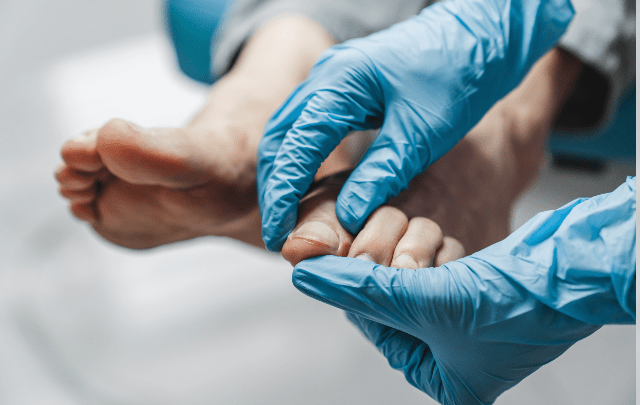Insights Into Hammertoe Surgery
 In the hustle and bustle of daily life, it’s easy to take our feet for granted, until they start to hurt. Hammertoe is one such condition that can turn every step into a painful reminder of its presence. This common foot ailment affects countless individuals in the United States, but while it can be distressing, there is hope. There are several treatment options are available to manage hammertoe and alleviate its symptoms. In severe cases, hammertoe surgery may be necessary.
In the hustle and bustle of daily life, it’s easy to take our feet for granted, until they start to hurt. Hammertoe is one such condition that can turn every step into a painful reminder of its presence. This common foot ailment affects countless individuals in the United States, but while it can be distressing, there is hope. There are several treatment options are available to manage hammertoe and alleviate its symptoms. In severe cases, hammertoe surgery may be necessary.
In this brief article brought to you by Mountain Spring Podiatry, we explore the foot condition known as hammertoe. We’ll also look at common causes and risk factors as well as symptoms of hammertoe. Finally, we talk a little about hammertoe surgery and what it involves. If you are looking for a licensed podiatrist, or foot doctor, then call Mountain Spring Podiatry to schedule an appointment today.
What is Hammertoe?
Hammertoe is a condition that transforms the shape and function of your toes, typically affecting the second, third, and fourth toes. It is aptly named, as the affected toes resemble the curvature of a hammer’s head, with an abnormal bend at the middle joint. This bending can cause significant discomfort, pain, and hindered mobility.
Understanding the Causes of Hammertoe
Hammertoe is not contagious, but family history can play a significant role in susceptibility. It is not a condition that strikes randomly; it often arises due to specific causes, including tight, narrow, or ill-fitting shoes force the toes into cramped positions.
Imbalances in the muscles and tendons that control the toes can also lead to hammertoe. Weak or tightened muscles can cause the toes to bend in ways they shouldn’t. Further, conditions such as arthritis can damage the toe joints, leading to deformities like hammertoe.
Identifying Hammertoe
The symptoms of hammertoe can be both physically and emotionally distressing. They may include persistent pain in the affected toes, often intensified when walking or wearing shoes. Moreover, the unusual toe shape can cause friction against shoes, resulting in painful corns and calluses. As you can imagine, the pain combined with reduced flexibility of the joints can lead to reduced mobility.
There are Treatment Options
Thankfully, several treatment options manage hammertoe and alleviate its symptoms. Start by choosing shoes that provide ample room for your toes. Look for footwear with a wide toe box to reduce pressure on the affected toes. Avoid high heels or shoes with a narrow front.
For moderate cases, custom orthotic inserts or over-the-counter padding can help redistribute pressure, reduce friction, and alleviate pain. A physical therapist can guide you through exercises to strengthen and balance the toe muscles, improving toe alignment.
Hammertoe Surgery as a Resort
While the non-surgical treatments mentioned above can be effective, surgery may become the best course of action in severe or persistent cases of hammertoe. Surgical intervention aims to correct the deformity, relieve pain, and restore function.
Some common surgical procedures for hammertoe include arthroplasty, arthrodesis, a tendon transfer, or an implantation:
- Arthroplasty involves removing a portion of the joint to straighten the toe.
- In arthrodesis, the affected joint is fused together, preventing further bending.
- In cases where the tendons are imbalanced, transferring a tendon can help restore normal alignment.
- Surgeons may use small implants to keep the toe joint straight.
It’s important to remember that surgery is not the first line of treatment for hammertoe. Your podiatrist or foot specialist will carefully evaluate your condition and discuss the best treatment options for you.
Consult with a Licensed Podiatrist
To schedule an appointment with a licensed podiatrist, call Mountain Spring Podiatry. Our team is on standby to take your call, and we are happy to arrange a walk-in appointment for as soon as possible.
